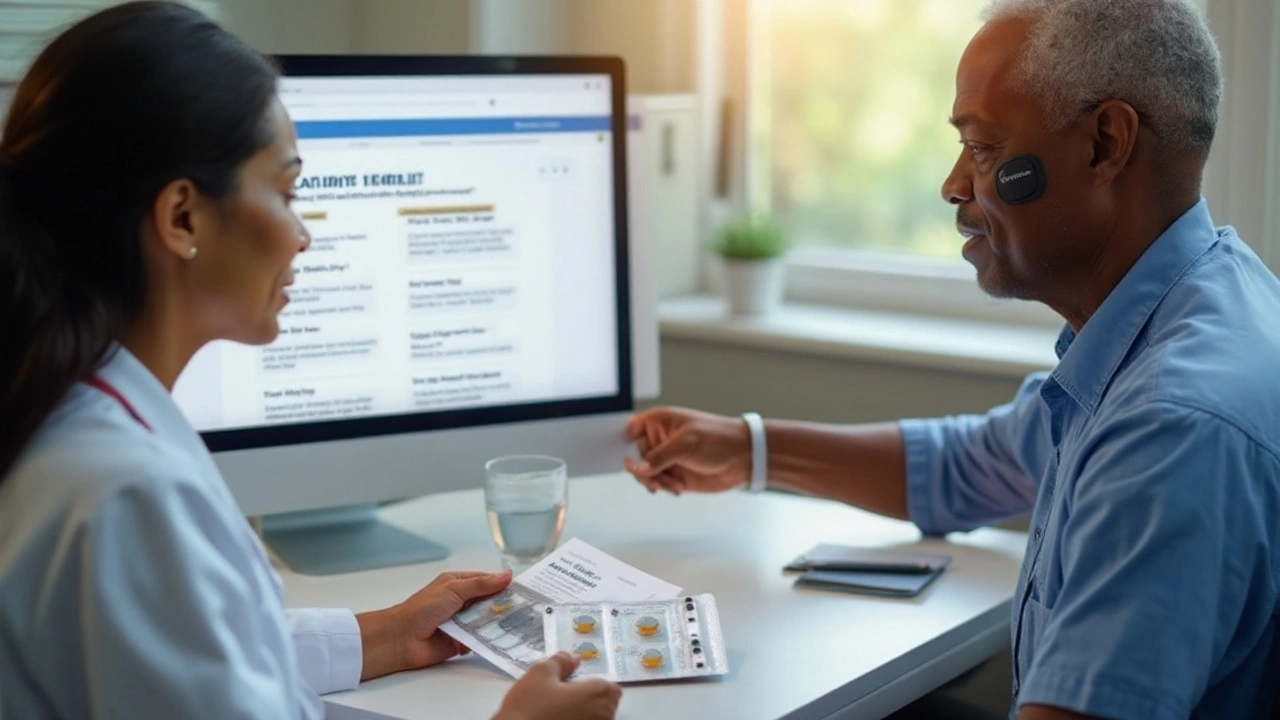Saxagliptin: Simple Facts About This Diabetes Pill
If you’ve been prescribed saxagliptin, you probably wonder how it helps and what you need to know before taking it. In this guide we break down the basics – no jargon, just clear answers you can act on.
How Saxagliptin Works
Saxagliptin belongs to a class called DPP‑4 inhibitors. Your body makes a hormone called GLP‑1 that tells the pancreas to release insulin after a meal. The enzyme DPP‑4 breaks down GLP‑1 quickly, which limits insulin release. Saxagliptin blocks DPP‑4, so GLP‑1 stays active longer. The result is more insulin when you need it and less glucose released by the liver.
This mechanism works best when you combine the pill with diet and exercise. It doesn’t force your body to make extra insulin; it just helps your natural system respond better to food.
Dosage, Safety, and Common Side Effects
Doctors usually start adults on 5 mg once a day, taken with or without food. If your blood sugar stays high, they might raise the dose to 10 mg. Keep the tablet whole – don’t crush or split it unless your doctor says it’s okay.
Most people tolerate saxagliptin well. The most common side effects are mild and include headache, sore throat, or a runny nose. Some folks report stomach upset or joint pain, but these usually fade after a few weeks.
A rarer but more serious issue is a sudden drop in blood pressure when you stand up (called orthostatic hypotension). If you feel dizzy or faint, especially after starting the medicine, call your doctor.
Kidney function matters, too. If you have moderate to severe kidney disease, your doctor may lower the dose or choose a different drug. Always tell your health team about any kidney problems.
Drug interactions can happen. Saxagliptin can raise the level of certain blood thinners, like warfarin, so monitoring is key. It also interacts with some antibiotics and antifungals. Give your pharmacist a full list of medicines, including over‑the‑counter supplements.
Pregnancy and breastfeeding? The data are limited, so most guidelines suggest avoiding saxagliptin unless the benefits clearly outweigh the risks. Talk to your doctor if you’re planning a family.
To get the most out of saxagliptin, pair it with a balanced diet low in refined carbs and regular walking or other activity you enjoy. Track your blood sugar regularly for the first few weeks; this helps your provider adjust the dose if needed.
Remember, saxagliptin is one tool in the diabetes toolbox. It works best when you stay active, eat mindfully, and keep in touch with your health team. If you have any new symptoms, unusual bruising, or persistent stomach issues, reach out for a check‑up.
Bottom line: saxagliptin can smooth out blood‑sugar spikes by enhancing your body’s own insulin response. Stick to the prescribed dose, watch for side effects, and keep your lifestyle on track for the best results.
- September 10 2025
- 13 Comments
- Daryl Gardner
Onglyza (saxagliptin) UK guide 2025: uses, dosage, side effects, risks, and safer alternatives
Plain-English UK guide to Onglyza (saxagliptin): what it treats, who should take it, dose, side effects, heart failure warning, and the fastest way to reach official leaflets.
- Health & Medicine (110)
- Health & Nutrition (8)
- Caregiving & Dementia (2)
- Health & Wellness (2)
- Environment & Climate (1)
Categories
- January 2026 (4)
- December 2025 (27)
- November 2025 (22)
- October 2025 (27)
- September 2025 (38)
- August 2025 (5)
- July 2025 (4)
Archives
- side effects
- generic drugs
- medication side effects
- dosage
- online pharmacy
- gut health
- medication safety
- generic substitution
- safety and side effects
- natural antioxidant
- coping strategies
- hypertension
- immunosuppressants
- mental health
- medication adherence
- drug safety
- NTI drugs
- narrow therapeutic index
- poison control
- combination therapy
